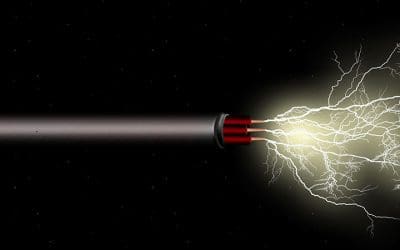On the surface, various aspects of the market are giving conflicting signals: batteries have piled into the Frequency Response market, collapsing its price, and are starting to look at STOR (though only longer-duration batteries can bid for it); the Capacity Market continues its downwards trend albeit much more slowly; and on the positive side the Fast Response market has opened up for 10MW plants, having previously only been available above 49MW.
But look below the surface (what we call the market fundamentals) and things are changing quite strongly in a positive direction. Examples of this include:
- The blackouts on August 9th showed the need for real inertia, and also gave us an opportunity to discuss again how our neighbouring countries in future will not have surplus electricity to export when we need to import, so we can’t rely on interconnectors for our core demand.
- These blackouts showed the ever-increasing market share of intermittent generation, which is increasing fundamental demand for balancing and ancillary services. Meanwhile National Grid’s total expenditure on these services (and curtailment) continues to rise inexorably. We could provide these services without these ever-increasing prices.
- Reflecting the first of these points, almost coincident with the blackouts, National Grid announced a Stability Pathfinder to monetise / incentivise both inertia itself and all the inertia-related services that we’ve been pointing to for 3-4 years as being up-side potential revenues for our plants.
- National Grid are also running another Pathfinder to procure Black Start competitively – always previously such contracts have been negotiated bilaterally, i.e. behind closed doors. While we’re not located in either of the two locations identified, when we can bid competitively this provides for yet more of our up-side potential revenues.
- Mark is, on an ongoing basis, in the group being consulted by National Grid ESO on their business plan etc., and sees a much greater degree of receptiveness than ever before to alternative ideas and to accepting the shortfalls in the way things have been managed until now, with a view to correcting them. Mark has written about many of these problems and proposals in his blog and feels that these ideas are increasingly welcomed.
- The European Commission passed a directive in May this year, with UK approval, that (among many other things) enables regulators to grant derogations to grid operators to finance storage if it’s not being built. This isn’t yet enacted into UK law, isn’t targeted for that until October 2020 and may fall foul of Brexit, but the UK wants to remain part of ENTSO-E and the European Single Market for Energy for which it must enact the directive. Investments had previously been interested in financing our first TES CAES plant.
- There is increasing interest from financiers in taking on a modicum of technical risk, largely driven by the ~2trn washing around in both London and New York without anything to invest in that pays significantly positive interest rates. Even a few pension funds have earmarked funds (small for them, huge for us) for such investments – especially in the area of clean energy infrastructure, where we sit.
- Even the downwards trend in Capacity Market prices can be seen as a positive: it’s driven by 85% of the last T-4 auction round (T-4 is what interests us: up to 15-year contracts procured up to 4 years in advance of delivery of power) having been won by one-year contracts, meaning that capacity is not being procured for years into the future and rival investments are therefore not being made.
So the directors are increasingly optimistic, with the message: “Hold on tight – it may be a bumpy ride but it’ll get there and be exhilarating when it does.”


